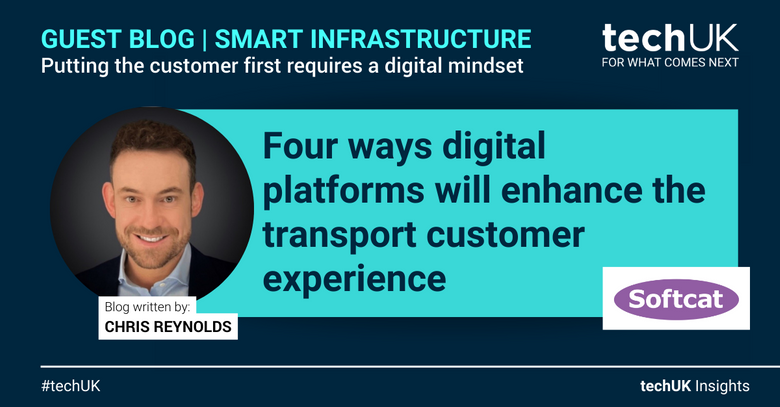Four ways digital platforms will enhance the transport customer experience (Guest blog by Softcat)

In recent years, the transport industry has been leveraging Digital Platforms to improve the customer experience – for example, Network Rail’s “Putting Passengers First” initiative is leveraging machine learning and enhancing WiFi across all stations. By adopting two specific Digital areas - advanced data management techniques and reducing technical debt, various transport entities are better able to track, analyse, and respond to customer needs, ultimately resulting in higher levels of customer satisfaction.
One key way in which digital platforms are supporting the customer experience is through data management. Transport companies are using sophisticated data collection and analysis tools to monitor customer behaviour, identify trends, and track service performance. By leveraging this data, companies can better understand the needs and preferences of their customers, and tailor their services accordingly. Network Rail have a series of API’s to provide data, for example the RTPPM (Real Time Public Performance Measure) which is providing data on the performance of trains against the timetable, measured as the percentage of trains arriving at their destination on-time. It is updated at the rate of one message per minute.
Transport entities are also using customer data to provide more personalised services. By collecting data on past trips, customer preferences, and other relevant factors, companies can offer customised recommendations to individual customers. This might include suggestions for alternative routes, preferred modes of transport, or special deals and promotions. Such personalisation can lead to higher levels of customer satisfaction and loyalty – think Uber and Lyft as a prime example (These apps collect a wide range of customer data, including past ride history, trip destinations, preferred payment methods, and other relevant information. By analysing this data, ride-sharing companies can offer personalized recommendations and promotions to individual customers). This all supports the shift to MaaS (Mobility as a Service).
Data management is also being used to improve the accuracy and efficiency of transport services. By collecting and analysing data on traffic patterns, weather conditions, and other factors that can impact service delivery, companies can make real-time adjustments to their operations. This might include rerouting vehicles to avoid congestion, adjusting timetables to reflect changing demand, or deploying additional vehicles to areas with high demand. By using data to optimise service delivery, companies can minimise delays, improve on-time performance, and reduce the likelihood of service disruptions.
Another way in which Digital Technology is improving the customer experience in transport is through the reduction of technical debt. Technical debt refers to the accumulation of outdated or inefficient IT systems and software that can hinder service delivery and negatively impact the customer experience. By reducing technical debt, transport companies can streamline their operations, reduce costs, and improve service quality.
For example, many transport entities are replacing legacy IT systems with modern, cloud-based platforms. For example, we have seen DVSA accelerating the migration to a digital Theory Test Online Booking system using a large public cloud hyperscaler, and reducing hosting costs for the Vehicle Operator Licensing service by 42%. This reduction of technical debt allows transport entities to centralise their data and operations, simplify their workflows, and reduce the need for manual intervention. By automating routine tasks and eliminating unnecessary steps, companies can improve service quality and reduce the risk of errors or delays.
Additionally, the adoption of modern IT systems can help transport companies to better integrate their services with other modes of transport. For example, by using open data standards and APIs, companies can make it easier for customers to plan and book multi-modal journeys. This can result in a more seamless and convenient customer experience, as well as increased revenue for transport companies. One example of a multi-modal transport model is the integration of public transit systems with bike-sharing or e-scooter-sharing services. This approach is often referred to as "first-mile, last-mile" transportation, as it focuses on connecting passengers to and from transit stations. Examples include Lime and the Transit App.
In conclusion, Digital Platforms and Technology, in particular data management and reduction of technical debt is playing a critical role in improving the customer experience in transport. By adopting advanced data management techniques and reducing technical debt, companies are better able to monitor customer behaviour, optimise service delivery, and provide more personalised services. As transport companies continue to invest in IT, and we see the development of GBR, reduction of silos between Transport Government agencies and enhanced data sharing, we can expect to see further improvements in the customer experience, as well as greater efficiencies and cost savings for transport providers.


